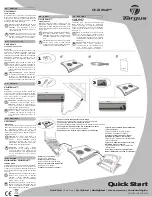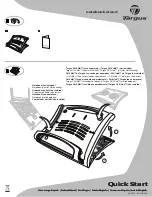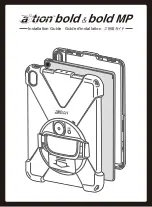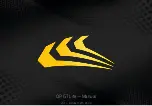
3
and the safety strap wrapped around the stay and the hook snapped into the D-ring
• The person riding the towing bicycle should be at least 16 years of age & in good physical condition.
• Be sure that the bicycle used with the trailer is in good working condition and has good brakes.
A bicycle shop can help you with inspection and maintenance. It is recommendable to equip the
towing bicycle with rear-view mirrors. At dusk or dawn, the lights must always be switched on.
• Do not overload the trailer. The load limit for cargo and/or passengers is 45kg (100lb). Position
the load as low as possible and center it within the trailer (front to rear and left to right). Any
extra gear should be placed towards the rear. All loads should be secured so that it does not
shift.
IMPORTANT:
Instruct children riding in the trailer not to bounce, rock or lean; such
movements may cause the trailer to lean or flip. The tow-bar must not bear any extra load.
• Do not attempt to install other seating systems in the trailer. It is not designed for car seats,
stroller seats, infant beds, or any other type of seating. Use of any seating system other than
the original equipment seat will void the warranty, and may result in damage to the trailer or
injury of the passengers.
• Pulling this trailer affects the operation of the bicycle. Stopping, starting and turning are
affected, depending on the weight of the cargo. To familiarize yourself with the changes,
load the trailer to capacity and practice in a safe area. Do not use your trailer until you have
become accustomed to how it affects your bicycle handling.
•
SUFFOCATION WARNING:
Plastic bags can be dangerous. To avoid danger of suffocation,
keep plastic bags away from babies and children.
SAFETY TIPS FOR RIDING
• Before using, be sure the trailer is correctly assembled according to the manufacturer’s
instructions.
• Before attaching this trailer to your bicycle, please have your bicycle inspection by a qualified
bicycle mechanic for compatibility.
• Before each ride, ensure the attached trailer does not interfere with braking, pedaling or
steering the bicycle.
• Make sure your bike brakes work properly. Braking distance is increased when pulling a trailer.
• A bicycle with trailer attached requires a wide turning radius! Do not turn sharply.
• When pulling one child in the trailer, seat him/her in the center.
• Never remove protective canopy when pulling children in the trailer.
• Never pull or push the trailer/stroller at night without adequate lighting and reflectors, obey all
local legal requirements for lighting and reflectors.
• Always use the safety flag when pulling this trailer.
• A reflector that complies with the homologated regulations shall be visible on the trailer.
• Install a rearview mirror on your bike to check on children in trailer.
• Be aware of exposure hazards such as wind-chill and heat exhaustion by less-active trailer
passengers in prolonged exposure in colder temperatures, or by extended periods in warmer
temperatures without adequate ventilation and hydration.
• Use extra caution when turning on uneven pavement, and going downhill.
• Do not ride over curbs. Avoid bumps and holes. Always signal your turns.
• Do not travel on the highways, busy streets or in areas unsafe for bicycling.
• Do not use trailer in snow or icy conditions.
• Do not travel or descend at high speeds.
• Do not exceed 16Km/H(10 M/H), because high speeds adversely affect your ability to control
the bike and to notice road irregularities.
• Do not allow any of the child’s body, clothing, shoe laces, or toys to come in contact with
moving parts.
SAFETY RECOMMENDATIONS FOR PASSENGERS:
The safety of your child is of great concern. The trailer seat is intended for passengers older than
12 months and able to wear an approved helmet. Your children must be able to hold their heads
upright. Check with your pediatrician to make sure your child’s development makes him or her a
suitable passenger in this trailer. Make sure that your child is seated securely and the harness is
properly engaged. The child’s sitting height should be below the crossbar, and the correct shoulder
strap height must be used.




























